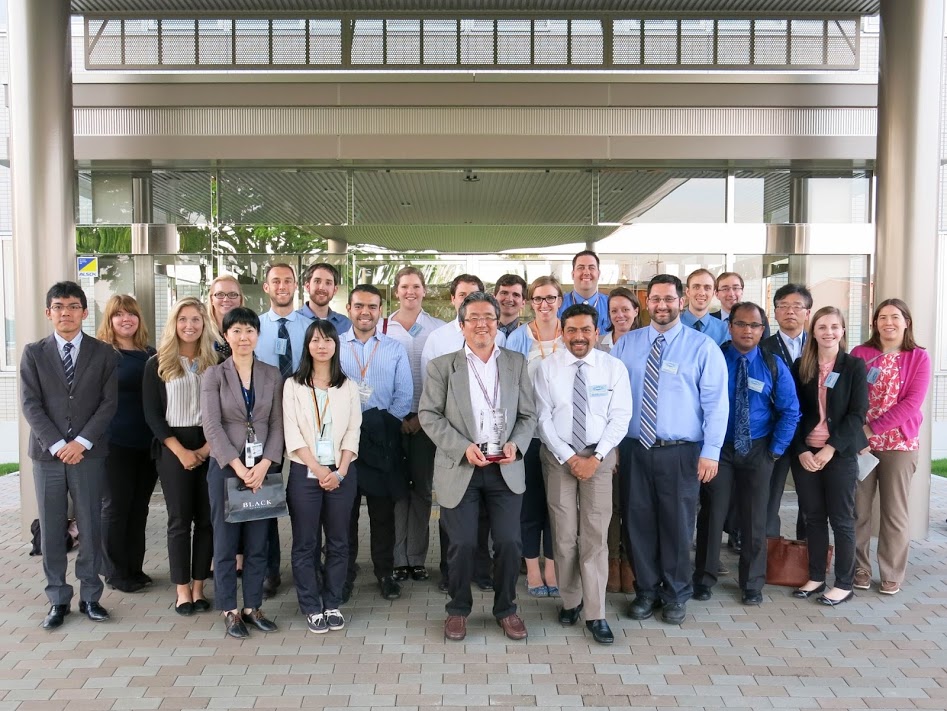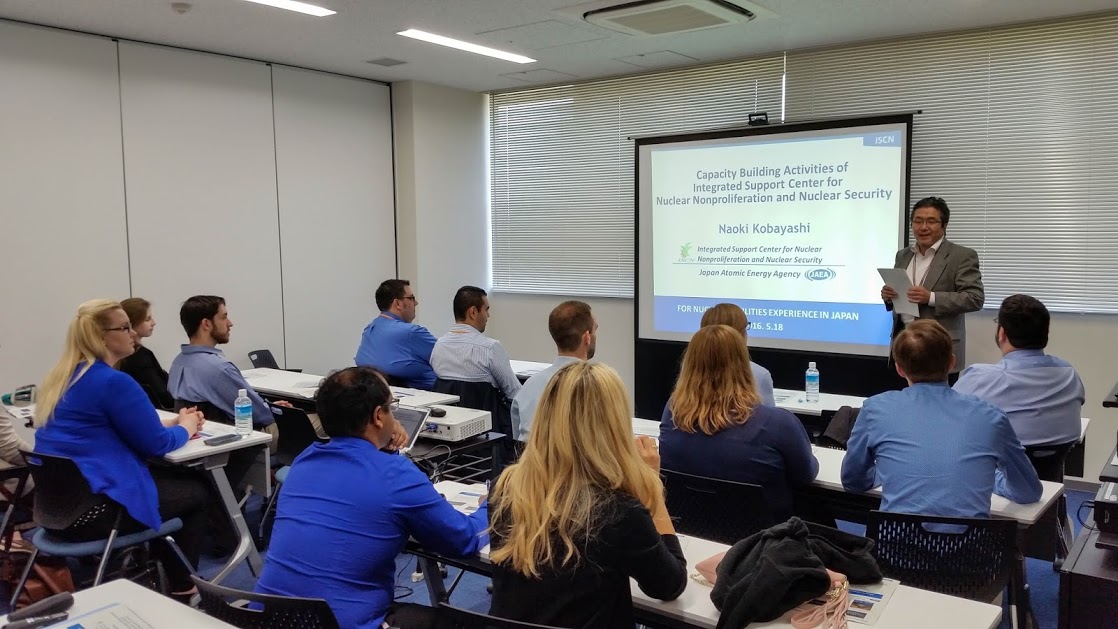
From May 15-20, the Texas A&M Engineering Experiment Station’s Nuclear Security Science and Policy Institute (NSSPI) led the 2016 Nuclear Facilities Experience (NFE) in Japan for graduate students from U.S. universities and young professionals from U.S. national laboratories. The event was coordinated in conjunction with the Integrated Support Center for Nuclear Nonproliferation and Nuclear Security (ISCN), which is part of the Japan Atomic Energy Authority. Support for NSSPI's coordination of the NFE was granted by the Next-Generation Safeguards Initiative (NGSI) of the Office of Nonproliferation and Arms Control in the Defense Nuclear Nonproliferation Program’s Office of the National Nuclear Security Administration.
Participants of the 2016 Japan NFE included students and staff from six universities and five national laboratories. The nuclear engineering graduate students were selected based on their specialization in nuclear nonproliferation-related topic areas and included students from Texas A&M University, the University of Tennessee at Knoxville, Western Michigan University, the University of Cincinnati, the University of Utah and Pennsylvania State University. The Texas A&M students included two NSSPI students and two students from the Bush School of Government and Public Service who had previously taken NSSPI classes. The NGSI sponsors selected the six national laboratory employees, which included early-career research staff members from Sandia National Laboratories, Los Alamos National Laboratory, Lawrence Livermore National Laboratory, Pacific Northwest National Laboratory and Argonne National Laboratory. NSSPI research engineer Claudio Gariazzo and Dr. Sunil Chirayath, director of NSSPI and research assistant professor in Texas A&M's Department of Nuclear Engineering, led the group on tours of facilities and historically significant sites throughout Japan.

The event kicked off with a series of visits to the historically significant Hiroshima Peace Park and the Peace Memorial Museum, where Hiroshima survivor Ms. Keiko Ogura gave her account of the events of August 6, 1945. The students and staff members engaged with Ms. Ogura by asking her numerous questions regarding her experience of that fateful day. "We got to speak with a bomb survivor, Keiko, and hear her account of what she experienced that day and also the stigmas she and other bomb survivors have had to cope with their entire lives as a result of surviving," Texas A&M nuclear engineering student Lainy Cochran remarked. "This was something I had never considered before." The visit to Hiroshima offered participants a living testament to the importance and gravity of the nuclear nonproliferation challenge the world faces today. Ian Schwerdt, a graduate student from the University of Utah, said, "Visiting the Hiroshima Peace Memorial definitely put my research efforts and career goals in context. Hiroshima provided the 'why' behind our nuclear nonproliferation and safeguards efforts. It was a humbling experience and demonstrated what can happen if the world community fails to utilize nuclear materials for peaceful purposes."
For the duration of the week, the NFE participants visited several advanced nuclear fuel facilities in Japan, including two reactor facilities, one nuclear power plant, two reprocessing facilities, one MOX fuel fabrication facility, one uranium enrichment plant, and two national research laboratories. Katrina Koehler, a Los Alamos National Laboratory staff member who is also pursuing a Ph.D. in nuclear physics at Western Michigan University, remarked that there "are few academic opportunities to fully understand the fuel cycle. The Nuclear Facilities Experience provided me with much of the background I was lacking."
According to Bush School student Kerrie Ford, one of the main things that she took away from this experience was "how much care must be taken with security measures in each facility, as well as how each facility prepares for IAEA safeguards and inspections. Before entering each facility, and between various facility checkpoints, we passed through various security systems and badging processes. Once in the facilities, one can see cameras and other security measures in place. From a safeguards perspective, many facilities had visible IAEA cameras, seals, and equipment storage cabinets, allowing us a greater glimpse into how the IAEA interacts with these facilities."

Participants were able to both see the safeguards measures in place first hand as well as discuss applied material control and accounting measures with actual practitioners and facility operators, as well as staff members from the International Atomic Energy Agency (IAEA) and the Japanese Atomic Energy Agency's (JAEA) Integrated Support Center for Nuclear Security and Nuclear Nonproliferation (ISCN). "This trip was an incredible opportunity to view the safeguards technologies we've learned about at NSSPI in action on some of the most famous facilities in the world," said current Bush School student and NSSPI graduate Steven Horowitz. "We've always talked about the reprocessing facilities in Japan and how intensive the safeguards were on them, so to talk to the Japanese individuals directly responsible for this was an irreplaceable opportunity."
Beyond their purely educational value, programs like the NFE also give students and young professionals entering the area of international safeguards and nuclear nonproliferation essential international travel experience and contact with peers in their same field. Ford echoed this when she stated, "Professionally, the Japan NFE trip was beneficial because we were traveling with a mix of students and national lab employees, whom we were able to network with and ask questions to about their professional experiences."
The NFE program directly supports the NGSI mission of training and retaining the next generation of safeguards professionals through unique experiences. Zoe Gastelum is an early-career professional who works in the International Safeguards & Engagement group at Sandia National Laboratories. "This opportunity came at a time when I was feeling like I had reached a plateau in my safeguards education," she reflected. "Though I continue to follow the latest research and news in this area and participate in professional organizations focused on international safeguards activities, I had felt as if my understanding of safeguards had stagnated. This was a fantastic learning experience for me, and I felt as if my safeguards knowledge was both refreshed and greatly expanded."